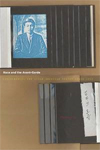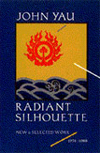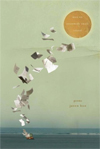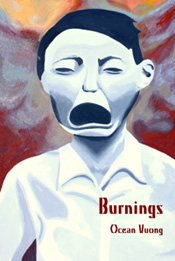As of December 24th, the LR blog staff is taking a little break for the winter holidays. We will be back from hiatus on January 18th, with more new content and fresh updates about the impending release of Issue 2. In the meanwhile, please accept our best wishes for a joyous holiday season and a happy and healthy New Year. See you in 2011!
Staff Picks: Holiday Reads 2010
Last year, we asked our staff writers to recommend books that they’d read in the last year and thought were worth passing on. This year, we’ve decided to continue with this tradition. In light of that, here are our holiday staff picks for 2010 (poetry, prose and more—yes, we read more than poetry!)
* * *
Recommended by Mia: “This is one of the key critical texts on my reading list for the holidays. I’ve only skimmed the first few chapters, but thus far have found Yu’s argument compelling, his analysis rigorous, and his wide-ranging knowledge of Asian American and Language poetry in the United States to be informative to my own work—not to mention useful in historicizing these two movements/moments in contemporary poetry!
From the Tinfish Editors’ Blog: ‘Using a definition of the avant-garde that has less to do with aesthetics than with social groups composed of like-minded artists, Yu argues that Asian American poetry and Language writing formed parallel movements in the 1970s. […] Both presented themselves in opposition to the mainstream; both were marked by questions of form and racial identity. Both meant to create art out of social groups, and reconstitute the social through the reception of their art.'”
* * *
Radiant Silhouette: New & Selected Work 1974-1988 | John Yau | Black Sparrow Press (1989)
Recommended by Mia: “Yau is one of the two major poets that Timothy Yu addresses in Race and the Avant-Garde (Theresa Hak Kyung Cha is the other), so I’ve been reading through his New & Selected Work for an introduction to the thematic and aesthetic scope of his early career. He’s a fascinating figure in Asian American poetry and, as Yu points out, ‘might best be read as a restoration of the links between politics, form, and race that characterize the avant-garde Asian American poetry of the 1970s [… providing] the first opportunity for most readers to recognize […] the presence of that avant-garde back into the very origins of Asian American writing.'”
* * *
Man on Extremely Small Island | Jason Koo | C&R Press (2009)
Recommended by Iris: “Jason Koo’s style is very different from my own, but this book (his first collection) managed to completely charm me with its quirkiness. The voice of the book’s primary speaker manifests a world-weary exhaustion that is, on the surface, darkly melancholic and painfully self-deprecating. He obsesses over his dirty apartment while eating a tuna sandwich, dreams about floundering clumsily through an encounter with Lucy Liu, envisions himself stranded on an island in the middle of an ocean, worrying about the size of his nose. But beneath the speaker’s (at times endearingly hyperbolic) self-consciousness lies a striking vulnerability and a luminous ability to evoke the fantastic within the mundane: BBQ chip crumbs echo the ‘fine grains / of my slovenliness,’ becoming ‘barbecue pollen,’ and later, ‘orange microbes’ (9); Lucy Liu becomes a motherly goddess figure who guides him through a secret mission, ‘pulling you after her diving into the stage,’ which becomes the arena for an undersea showdown complete with battleships, lingerie models, and harpoons (22) , the island transforms into the kneecap of a giant woman who ‘has no nose. Just a space where mine / can fit’ (77). Part Frank O’Hara, part tragic hero of his own sardonic comic-book series, the speaker’s sense of humor, whimsy, and wonder, as transmitted by Koo’s craft, paint a picture of a world that reinvisions the now-archetypal image behind John Donne’s famous ‘No man is an island’ with simultaneous irreverence and tenderness. ”
Review: Ocean Vuong’s BURNINGS
Burnings by Ocean Vuong | Sibling Rivalry Press 2011 | $12.00
Ocean Vuong’s first chapbook of poetry, Burnings, is a searing elegy to a deceased motherland that continues to smolder in the memories of those who left her in the wake of war. Although Vuong is a member of the 1.5 generation (the children and infants of Vietnamese refugees with scant memories or no memories of that armed conflict) his writing boldly confronts, grapples with and reflects themes of personal and political dissolution and regeneration.
Do not say our names as this flame grows
from the edge of the photo, the women’s smiles
peeling into grimaces, the boy spreading slowly
into black smudge, filaments of fire
dissolving into wind. No, do not say our names.
Let us burn quietly into the lives
we never were.
[from “Burnings”]
What comes forth in the title poem is the shock of tangible, catastrophic loss. It gives you the feeling of being gradually burned down to a nub, leaving behind only a trail of stoic grief, and in order to get on in life and persevere you must transcend it.
An apt Mark Doty epigram divides Burnings into two sections, but the transformative medium of fire is the theme that runs throughout the chapbook. As I read Vuong’s poems, I imagined each one warping and crinkling in my hands, heating up my fingers, as if someone had lit a match at the corner of the page. The slow burn of Vuong’s verse and his juxtaposing and melding of life and death give off sparks in the dark that illuminate truths which one never truly forgets.
Review: Barbara Jane Reyes’ DIWATA
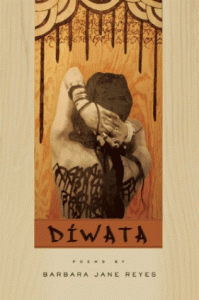
Diwata by Barbara Jane Reyes | BOA Editions 2010 | $16
In Poeta in San Francisco, Barbara Jane Reyes’ previous book, diwata was someone “elders say” had once “walked on earth” before the “the nailed god came” (30). These are the traces and rumors from which the titular Diwata of her latest book is resurrected. Then, like slippery oral art, like slips of the tongue, creation stories about men, women, and diwata—a god or spirit in Philippine mythology—are made up and told again and again. The poems in Diwata draw also on, and retell, Judeo-Christian creation narratives, introduced and enforced in the Philippines by the Spanish colonial regime. These retellings of myths and folk tales become a modality through which ahistory is rendered into history, history itself is investigated, and variations of diwatas, their quarries, and their hunters are revealed as inhabiting multiple narrative, linguistic, and cultural sites.
A globe our size, where migrations, displacements, and diasporas have become fairly common, and networked space-time has become a given for its globalized areas, is increasingly in need of transnational, translingual, transcultural mythologies. Diwata is one such transmission, in English, Spanish, and Tagalog. While most poems in the book take the form of story, it also has songs, couplets, pantoums that pick up the motifs of repetition and variation, creating a sinuous overlapping sonic rhythm.
Diwata inhabits many temporalities: it goes back in time before time and to the pre-colonial time and the colonial time; it stays in once upon a time and also strays in the present. By de-colonizing time from its linear, industrial, western model, it recuperates and liberates mythic, folkloric, and indigenous entities historically demonized and suppressed by the Catholic church and the Spanish colonial administration. The deep time of myth and folklore in Diwata is not static; rather, it is like static, a kind of oracular interference that sharpens the reader’s awareness of acts of wounding as well as acts of resistance performed during Philippines’ colonization, first by Spain and then by the USA.
Weekly Prompt: Portrait of a Return

The approach of the holiday season always makes my thoughts turn towards home—regardless of whether or not (and where) I’ll be traveling—and makes me revisit my relationship to the process of returning to its streets and idiosyncratic landmarks. The buses and shuttles and planes and cars I’d take to get there. The things I’d see and do when I did. Home is, to some degree, Philadelphia, where Mayor Nutter’s face greets me as I descend the airport escalator, and where I can lope off to Chinatown for the world’s best bao (K.C.’s) or a steaming bowl of broth swimming with fishballs and silky ho fun (Ting Wong). But it is, more quintessentially, my parents’ quiet hometown in New Jersey, where suburbia swells out over the fences, becoming more pale and alien each time I blink, but where, in my family’s house, there’s always a kitchen light on and a steaming hot bowl of fresh chicken soup waiting for me whenever I return, suitcase in hand.
Today’s prompt is based on an exercise that Bruce Snider, one of my undergraduate mentors, used to use in his workshop classes.
Prompt: Think of a city, town, or other geographical location that you know intimately, and write its portrait, in the form of a poem that details a specific return to that place.
Becoming Realer: The Spirit of the Sky
Becoming Realer: Identity, Craft and the MFA is a column that explores issues of poetry, theory and writing craft in relation to the personal experiences of Saint Mary’s College of California Creative Writing MFA candidate and LR staff writer, Kelsay Myers.
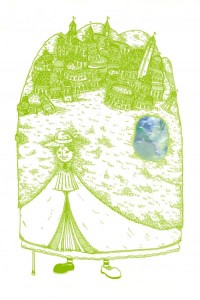
A few days ago, I told Rebecca Eckland that the main difference between us is that she comes from Nevadan dust and dirt, and I come from Michigander cows and cornfields. “One of my favorite teenage descriptions of myself was ‘I’m a skyscraper in a cornfield,’” I said. She laughed and told me that “I’m a star over a basin” was one of hers.
I’m a skyscraper in a cornfield struck me because of its clear imagery, though I consider myself a horrible imagist. My weakness with image is one of the major reasons I didn’t consider my poetry writing very good. When I first started taking poetry classes as an undergraduate, I struggled against, resisted and fought at every turn writing to the image rather than to the idea, as I’m an idea-oriented person. I t took me three years of writing to fully embrace the power of the image. And yet, here is an example of a much earlier self-description that captures my alienation from my environment and insatiable desire to stand out in a larger-than-life way with starkness.
Why this image has come back to me now, I have no idea. My hunch is that all of the memoirs I’ve been reading in the program have put me on my own memory excavation. And, why not? Living in the Bay Area has shown me, even more than living in Nashville, Tennessee, that we cannot escape where we are from. It comes with us.
Maybe it was reading Kristopher H’s artist statement on Escape Into Life. His paintings, like the one above, depict an imaginary place called “Iblard,” based on the work of a Japanese artist, Naohisa Inoue. He says that Iblard is “an imaginative space which everyone possesse[s] and yet [is] trying to run away from. A space about imagination and possibilities.” I wonder if we have to leave a place in order to see its possibilities, or if we create that space from our own imaginations.
Or, maybe it was the LR Blog prompt from November 12th. It asks us to describe an old pair of shoes that symbolizes death without ever saying “death” in order to explore image, metaphor and description. This prompt made me panic a little because I think that were I to attempt it, I would fail. I would write death. I would get lost in abstraction, or meditate upon the concept of death. I would probably leave out the old shoes entirely.
But, no matter what the impetus was, image and description have been on my mind since one of my first workshop meetings with my advisor. She asked what I do with an image when one comes to me.
“I try to write a poem about it, or make it into a metaphor,” I said.
“The other option is to make it into a scene,” she told me.
Scene is what I’ve been trying to work on this past semester because I’m awful at it. I panicked at my advisor’s statement too because it took me three years to grasp the power of an image. How long would it take me to get a scene? Would I ever master it? More realistically, would I ever be decent enough to pretend I’d mastered it?
My hunch is that I won’t. And yet, there was a star over a basin in Lake Tahoe. A skyscraper in the cornfields of Lowell.
Review: Eddie Tay’s THE MENTAL LIFE OF CITIES
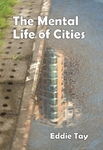 The Mental Life of Cities by Eddie Tay | Chameleon Press | HK$119
The Mental Life of Cities by Eddie Tay | Chameleon Press | HK$119
It may be helpful to start by pointing readers to Fenollosa’s The Chinese Written Character as a Medium for Poetry, the not entirely accurate but seminal work from 1920 that influenced Pound and Williams and stood among the beginnings of a poetic sinology in America. Of particular interest is the claim that Chinese writing is grammatically closer to “the thing itself,” each character inherently a transitive verb subsuming articles, prepositions, etc.—all those deadweight items in English grammar. Fenollosa writes that every Chinese word “is not exclusive of parts of speech, but comprehensive; not something which is neither a noun, verb, or adjective, but something which is all of them at once and at all times” (68).
During his career, Pound translated Chinese poetry into English, but not the other way around. The importing was meant to transform English only. I don’t suppose he gave much thought to bilingual writing, using both Chinese and English discretely in a single poem. For this reason, Eddie Tay’s third collection of poetry, The Mental Life of Cities, is a very interesting new book. In my last review, I showed the payoff of diglossic poetry in “Cities,” excerpted from the third part of the title poem. I’ll say a bit more about this hybrid form.
For one thing, all readers—whether or not they know Chinese—will have a curious experience of choice. Poetry, unlike most prose, cannot be skimmed; its rhetoric is shaped as much by lineation and sound as it is by grammar, and therefore the spoken rhythms of its speech must be followed. When we read Eliot’s “Four Quartets” and come across “So here I am, in the middle way, having had twenty years— / Twenty years largely wasted, the years of l’entre deux guerres” we may not know French but we can sound it out (even if poorly) and appreciate the rhyme. Eliot was being kind when he cloistered his Greek into an epigraph in “The Waste Land.” For when we read section vii of Tay’s lyric poem and come to “They don’t teach Leaves of Grass, 野草, Howl: / 老師說話你不能 不听, / 不能 不听” what do we do if we cannot pronounce the words? One can skip the Chinese and go straight to the translations, reading in a straight English scansion. Or pause at the ideographs and appreciate their visual representations—in fecund silence, as if reading a painting. Tay’s political geography is also of interest. In his preface, he gives examples of romanized pronunciations using pinyin; but he’s from Singapore (where Simplified Chinese is used) and writing in Hong Kong (Traditional Chinese). So a bilingual reader is presented with the choice of pronouncing these words in Mandarin (as Tay might) or in Cantonese (as most of the writing suggests).
Continue reading “Review: Eddie Tay’s THE MENTAL LIFE OF CITIES”
Weekly Writing Prompt: Writing About Workshop

The inspiration for this prompt comes from a lesson I taught recently in my Intro to Poetry class: “How to Workshop a Poem.” From an instructor’s perspective, it was a lesson on workshop protocol, giving constructive feedback, etc. As a creative writer, however, one who has sat through (and participated in, don’t get me wrong!) countless undergraduate workshops, graduate workshops, informal workshops, community workshops, middle school workshops, etc. etc. etc., the sense I got while delivering my mini-lecture was that my students were being inducted into some secret society, one with oddball rules (“The person whose work is being workshopped must never speak.” “If one wishes to refer to the ‘I’ in a poem one must always say ‘THE SPEAKER’ and never ‘YOU.’ “) and traditions not immediately intuitive but terribly, terribly important nonetheless.
Since the proliferation of university-housed creative writing programs, a process that began in the 1930s with the establishment of the Iowa Writers’ Workshop (just called “The Workshop” on the department webpage) and has caused the number of programs to skyrocket to unprecedented numbers (the current program count is somewhere around 800), we’ve entered an era in which most—if not all—of us have at some point encountered the Workshop beast. Most of us have been trained in an institutional context and as such, have grown accustomed to specific patterns of speech and behavior in the classroom. Which can be a bit weird.
[T]hat gives me a very strong feeling,
a very powerful sense of something.
But I don’t know if anyone else was feeling that.
Maybe that was just me.
Maybe that’s just the way I read it.(“Workshop,” Billy Collins)
All the same, we know workshop, both love and hate it, think it’s vital, useless, irrelevant, etc. So why not write about it?
Two well-known examples of “workshop” poems:
“Workshop” by Billy Collins
“For a Student Sleeping in a Poetry Workshop” by David Wagoner
Prompt:
Write a poem about workshop, set in workshop, or against workshop. Take your cue (or not!) from Collins and use the peculiar language and syntactical constructions we’re trained to use in the creative writing classroom.
Play with perspective and speak, like David Wagoner, from the instructor’s point of view, or if you’re more familiar with the student experience, from the shoulder of the participant. Have fun with voice and persona, and don’t be afraid to take a few jabs at what we all know as the Workshop beast.
Review: Shin Yu Pai’s ADAMANTINE

A Guest Post by Stephen Hong Sohn, Assistant Professor of English at Stanford University
Adamantine by Shin Yu Pai | White Pine Press 2010 | $16
Adamantine, as the title reflects, is a collection filled with luster, gleaming with deep insight, and further characterized by an ethereal landscape, focused on emotional connections, on spirituality, on death, and on the afterlife. Pai’s work travels both within and outside of ethnic and racial frames, thus complicating any transparent categorization of the collection as “Asian American” literature.
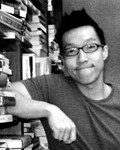
Nevertheless, the political character of many of her poems does make Adamantine speak to many of the field’s traditional concerns. I begin this review further into the collection, with what I believe is the larger project of the work. In “Thirteen Ways of Looking at a Vulture,” Pai’s lyric speaker considers the responsibilities of one who chronicles the lives of others:
eye
of the witness
the I of the commentatorgrubby children at the rim
of a Guatemala dump
stunned orphans in Russia (76)
The homonyms of “eye” and “I” function in different contexts, both on the level of ‘one who watches’ and ‘one who speaks.’ The following lines accordingly consider the issue of witnessing, with respect to the plight of global poverty. What is the responsibility of the lyric speaker, Adamantine continually asks, with respect to voice and sight? In that vein, I’d like to concentrate on one of the overall lyric approaches that Pai takes, which is to place current events and historical figures in comparative perspective. As part of Pai’s relational approach, the collection opens fittingly with an epigraph from Michael Ondaatje’s novel Anil’s Ghost. The passage from which Pai excerpts refers to prayers and mantras and explores how such spiritual inscriptions speak to individual loss and to aesthetic beauty. At the same time, by invoking Anil’s Ghost, Pai sets Adamantine firmly within a tradition that queries human rights and global conflict. Perhaps we are not surprised, then, when we find that the first poem’s title is “This is not My Story,” as if to immediately query the autobiographical impulse of the confessional lyric. The lyric stories of “Adamantine” are often those of Asian or Asian American figures who move beyond the speaker, including Thich Quang Duc in “Burning Monk,” where the lyric speaker repeats, as a kind of mantra, “his heart refusing to burn / his heart refusing to burn / his heart refusing to burn” (19). Of course, Thich Quang Duc is most famously known for his self-immolation in protest of the Vietnam War. The use of the word “heart” arcs out across this collection. We are reminded in the very first poem, “This is not my Story,” that the “human heart is / a wholly different animal, / we must sense when to give in / before the other gives up” (11). The importance of emotion and affect imbues the lyric speaker with a kind of power, leading her toward a pathway that involves spiritual reawakening. Another figure invoked is James Kim, the Korean American who died tragically when he and his family were caught in a winter snowstorm in Oregon. The lyric speaker gestures again to loss, but contextualizes his death within the frame of sacrifice, as James had attempted to situate help for his family despite the possibility that he could have succumbed to the austere weather conditions.
Weekly Prompt: Transportation

I’ve always found that one of the occasions on which I am best able to write is when I’m traveling. I don’t drive, and so whenever I need to go somewhere that is too far away to be reached by bike, I ride all sorts of buses, trains, planes, shuttles, trams, taxis, and other forms of mass transit in order to reach my destination. There is something uniquely meditative about these trips: despite the fact that I am usually surrounded by—even crushed in against—other passengers, the motion and sound of the vehicle and the relative anonymity of being amidst a crowd of strangers provide me with excellent opportunities to listen, observe, and record.
In Oliver de la Paz’s poem “Aubade with a Thistle Bush Holding Six Songs,” the speaker engages with the sensory aspects of his experience on a train in order to contextualize a portrait of a fellow passenger:
A man told me that he had wasted his life. I did not know him.
We were on a train moving from one trespass to the next,
the fields in the windows shifting utterly into daybreak.
As the poem progresses, we find that the train itself and the experience of traveling on it have become the primary device by which this portrait is rendered:
The rails below us were making comparisons
as if they were saying look at the thorn tree gone wild,
look at the gravel kicked on the ties.I wondered about the hollow of the guitar and of the voice of the man.
It’s always like this on trains‹the burn of your ear
when a stranger speaks over the sun cutting through windows.
The speaker, who knows nothing about this man besides what he has heard and seen of him within the context of the train ride, finds that the sound of the train and the slant of the light through its windows merge into his vision of this stranger, until, by the end of the poem, the man is absorbed into the greater network of train trips and other journeys that form the speaker’s experience: he is, the speaker states, just one of many strangers “who’s asked me for an ear.” Like so many piece of luggage, some of those people’s stories have been remembered by the speaker, while others’ have been “left at the station.” Most, we imagine, have suffered the latter fate. But the speaker remembers this particular man’s story because of the way that his memory of it is mediated by his own experience of the train ride. What he recalls most vividly is not the content of the story itself, but the scene outside the window of the train as it was being told: the three birds that “blur by,” and the way that their flight fixed this particular stranger into the speaker’s memory, as if sticking his name “to a thistle.”
Prompt: Write a poem that uses the sensory experience of riding a particular form of transportation as a device by which to relate the story of a journey or trip that you’ve taken.

